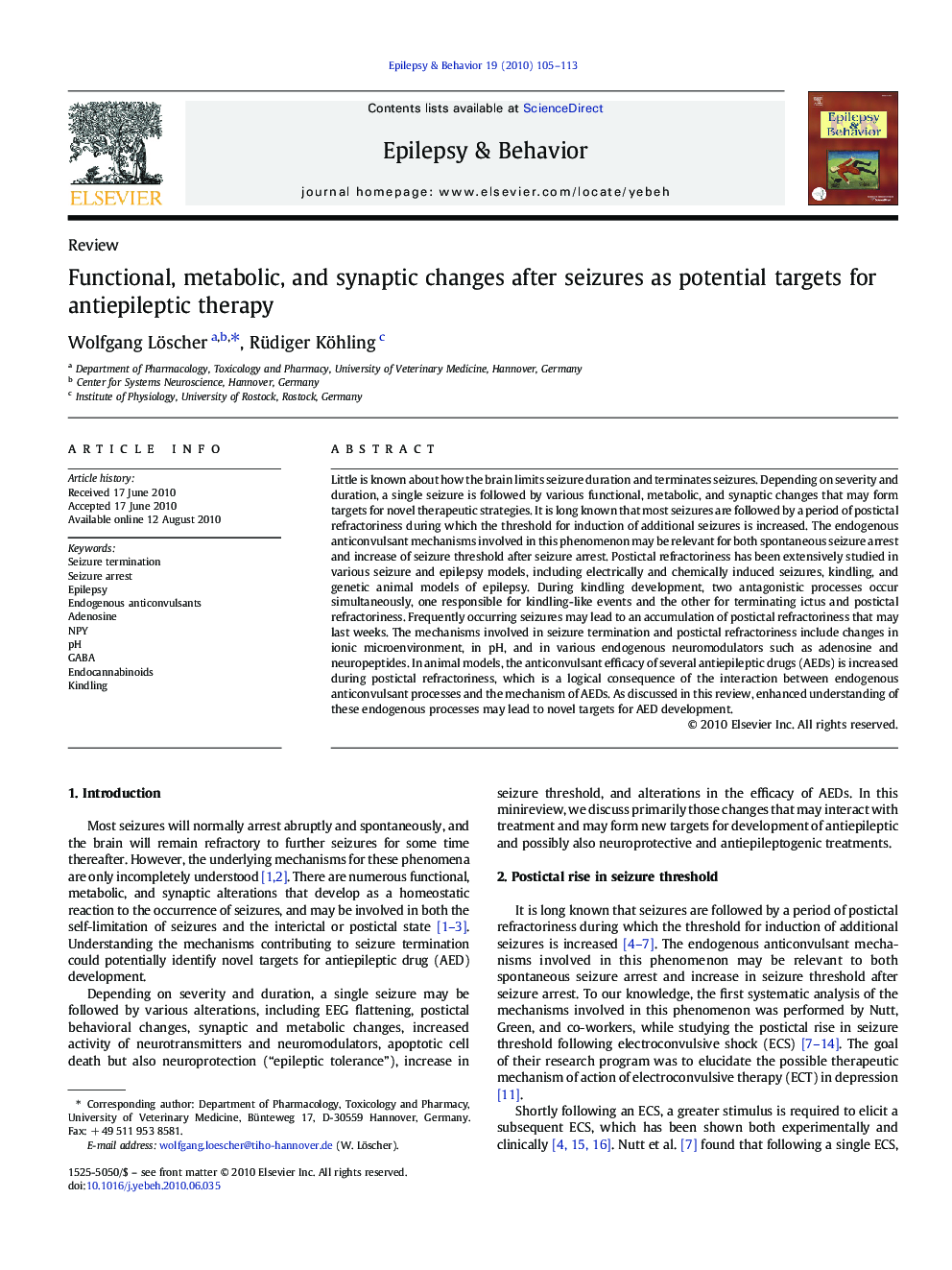| Article ID | Journal | Published Year | Pages | File Type |
|---|---|---|---|---|
| 3050169 | Epilepsy & Behavior | 2010 | 9 Pages |
Little is known about how the brain limits seizure duration and terminates seizures. Depending on severity and duration, a single seizure is followed by various functional, metabolic, and synaptic changes that may form targets for novel therapeutic strategies. It is long known that most seizures are followed by a period of postictal refractoriness during which the threshold for induction of additional seizures is increased. The endogenous anticonvulsant mechanisms involved in this phenomenon may be relevant for both spontaneous seizure arrest and increase of seizure threshold after seizure arrest. Postictal refractoriness has been extensively studied in various seizure and epilepsy models, including electrically and chemically induced seizures, kindling, and genetic animal models of epilepsy. During kindling development, two antagonistic processes occur simultaneously, one responsible for kindling-like events and the other for terminating ictus and postictal refractoriness. Frequently occurring seizures may lead to an accumulation of postictal refractoriness that may last weeks. The mechanisms involved in seizure termination and postictal refractoriness include changes in ionic microenvironment, in pH, and in various endogenous neuromodulators such as adenosine and neuropeptides. In animal models, the anticonvulsant efficacy of several antiepileptic drugs (AEDs) is increased during postictal refractoriness, which is a logical consequence of the interaction between endogenous anticonvulsant processes and the mechanism of AEDs. As discussed in this review, enhanced understanding of these endogenous processes may lead to novel targets for AED development.
